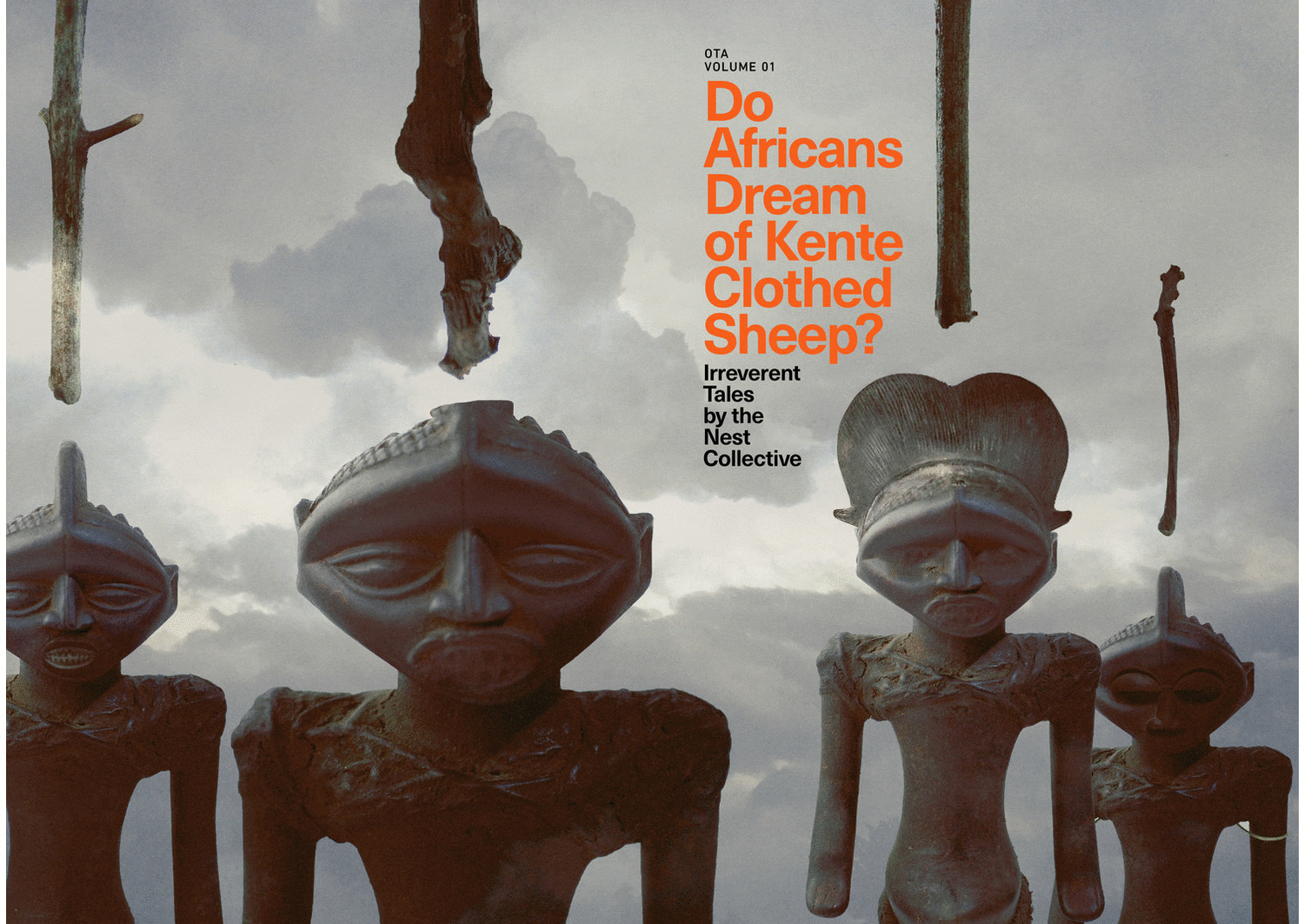The Nest Collective talks to C& about their eclectic projects from books to web series, and the links between African artifacts and colonial continuity in the West.

The Nest Collective, Return, 2016. Courtesy of the artist
C&: Do Africans Dream of Kente Clothed Sheep? That is the title of one of your latest publications in progress. Tell us a little bit more about how the idea for the book came about.
NEST: In our space, we have a lot of conversations that inform us and our work. The idea came from some of these “what-if” conversations. After self-publishing Stories of Our Lives, we were charmed by the idea of doing another book. We had also been enjoying the concept of illustration with words (comics, etc.) as well as serial narratives with related themes, and have always been fascinated by contemporary fairy tales and African sci-fi. The stories in the book were born in the intersection of all those things.
.
C&: We are showing here works from the story „Return“. How did it come about? Do you believe that all artworks and objects in US and European Museums should return to their various contexts in Africa?
NEST: We were reflecting on David Cameron’s hyperbolic 2010 statement about returnism, where he said that if the British government agreed to return one thing, “they would suddenly find the British Museum empty.”
.
C&: Does this imply that the British Museum owns nothing legitimately? So what if the British Museum becomes empty? Will the British Empire end?
NEST: There’s so much dishonesty and silence about how art and varied artifacts – not just from Africa, but globally – ended up in the Neues, the Louvre, the Brooklyn Museum, and other places that call themselves global archives. These items were taken, stolen, or coerced from their owners during colonialism and set up in colonial headquarters in spectacular displays of imperialism. The stolen items were just anthropological representations for the Europeans, but were pieces of great cultural significance to their people. There should be conversations with the original owners of these artifacts – whether governments or representatives of ethnic groups – about return or fair remuneration. Several great pieces have already been returned to their people, such as varied frescoes from the Louvre to Egypt, or the Hottentot Venus from the Musée de l’Homme to South Africa, and the French didn’t die. In the spirit of cultural exchange, something we feel we could return to the UK is the Mau Mau memorial monument located at our Uhuru Park because it’s truly not Kenyans who need to be constantly reminded about the fact that we were brutalized. It would be very helpful to the British, on the other hand, since they choose to overlook that part of their history systematically when educating their young ones. We think this is the real fear David Cameron had in that 2010 interview, which he hid behind the false apocalypse of an empty museum – that acknowledging publicly that so many pieces were improperly acquired would raise difficult, valid questions and admissions about what exactly the British did to get to their current place in the world, or even about that dreaded word – “reparations.”
.
C&: How do you work as a collective on projects such as the book, but also on others such as your very successful web series “Tuko Macho”?
NEST: Our process for working on the book wasn’t much different from how we worked on the web series. All of our ideas collectively contribute to the groundwork (skeleton) of each work. During our writing phases, different ideas from all of us feed into the script at different drafts so that the story can be as rich and diverse as possible. We usually split up roles as we move forward depending on the technical skills needed. We have a very particular love for shooting together, no matter how much we fight on set. Film is interesting for us that way – making it is an extension of our generally DIY, non-hierarchical process.
.
.
C&: What is your take on the Nairobi arts and culture scene right now? How or where do you see your work as a collective?
.
NEST: Our work shifts from one space to another because we address a wide variety of subjects with many different media, and for us that’s pretty cool. We enjoy the freedom this gives us.
We’re part of a dynamic ecosystem that is rapidly evolving, with many new artists and movements coming up, exploring a whole lot of cool ideas. It’s incredible to watch. Also, artists have a growing interest in making full-time artistic practice sustainable in a tough city and within an environment that is not exactly enabling. So there are many more conversations at government and policy levels to functionally solidify and validate the arts sector. However, simultaneously, different political voices within the same government are currently coalescing against freedom of expression in spite of what our 2010 constitution states. It’s quite bizarre to be the same people who are part of a constructive conversation on the one hand, and then also protesting a destructive one on the other, sometimes within the same week. This dissonance is far from healthy.
.
C&: What are actually dreaming of in terms of future endeavors?
NEST: We constantly think about creating work that presents bigger technical challenges and addresses harder questions with more grace and honesty about who we are and where we come from. Above all, we want to be better merchants of dreams.
.
Interview by Yvette Mutumba
More Editorial